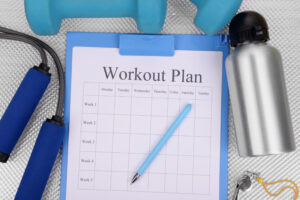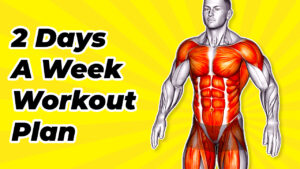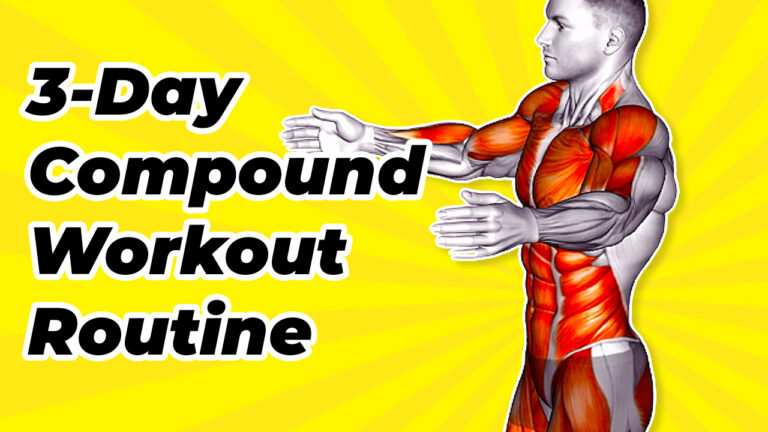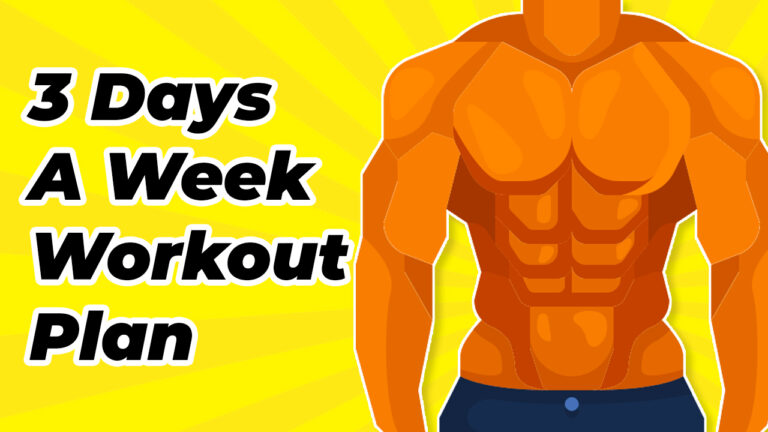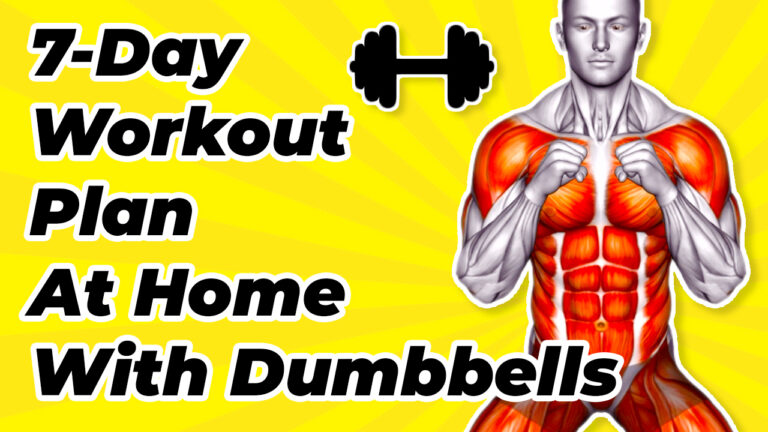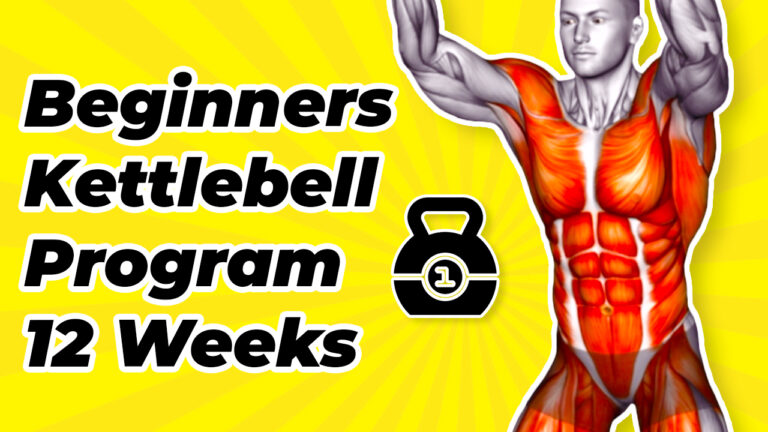Weekly Workout Plan For Weight Loss (Shed Pounds in Just 7 Days )
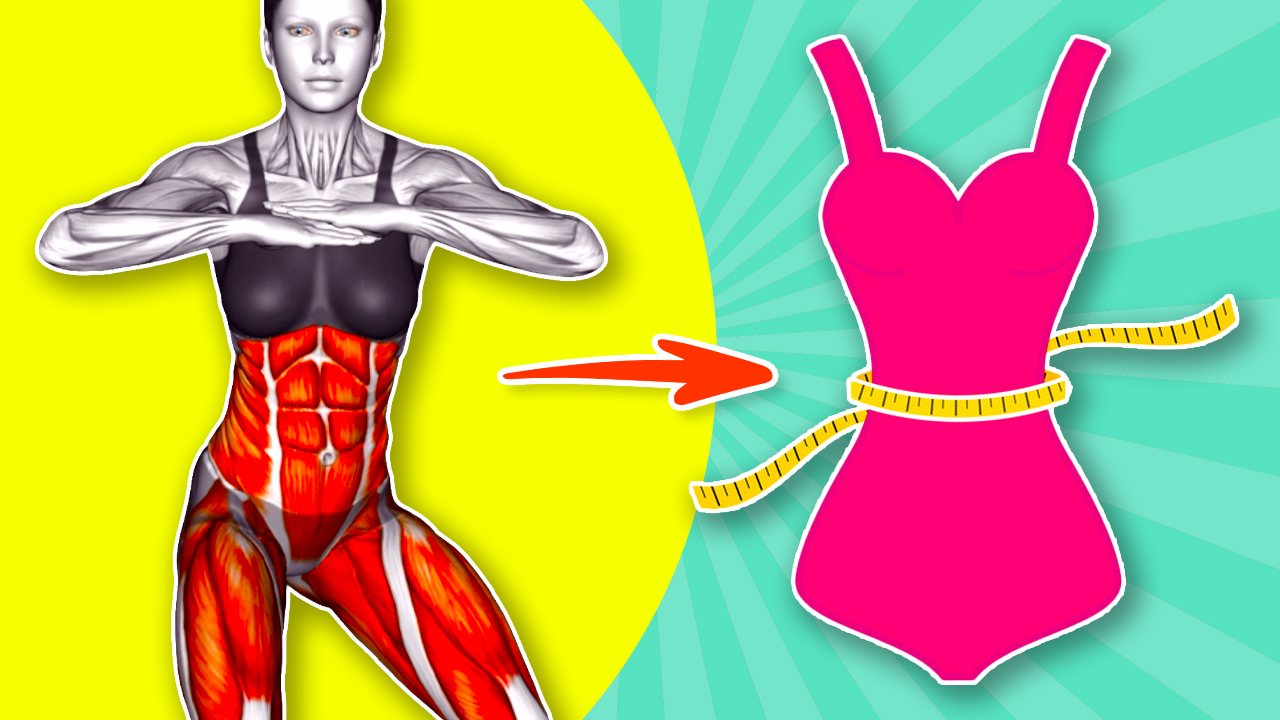
Losing weight feels like a battle we’re all trying to win. The truth? Shedding pounds isn’t just about cutting calories—it’s about the right mix of diet, exercise, and rest. That’s where our Weekly Workout Plan for Weight Loss steps in.
This plan is your guide to burning fat while building muscle, turning your body into a more efficient calorie-burning machine.
I’m Serg Bayracny, with over ten years in fitness coaching and sports nutrition. My journey from student athlete to certified personal trainer taught me that achieving health goals is more than hard work; it’s smart work—balancing strength training with cardio, focusing on physical fitness while keeping an eye on nutrition.

Ready for change? Keep reading.
Key Takeaways
- Mixing different workouts like HIIT, strength training, and cardio helps burn more calories and build muscle.
- Set realistic goals based on your fitness level and change them as you get stronger. Use tools to track your progress.
- Rest days are very important for muscle recovery and preventing injuries. Make sure to include light activities like walking or Pilates.
- Eating right fuels your body for exercise and supports fat loss over just weight loss. Try to eat healthy foods most of the time.
- Keep workouts fun by trying new exercises or sports each week. This keeps you motivated and prevents boredom.
Key Concepts in Weight Loss and Exercise

Losing fat and dropping weight are not the same thing. A good Weekly Workout Plan For Weight Loss mixes eating right, moving your body, and getting enough rest.
Fat Loss vs. Weight Loss Explained
Fat loss and weight loss are not the same, though many think they are. Fat loss means you’re burning off body fat, making muscles more visible. Weight loss can mean losing water, muscle, or fat.
People often watch the scale to track weight loss. Yet, what really shows progress is the change in body composition – less fat and more muscle.
Eating right supports both fitness goals and a healthy life. Adding High-Intensity Interval Training (HIIT) to your workout burns a lot of calories fast and helps build muscle too.
For those wanting to lose weight and get healthier, it’s about finding the right mix of diet, exercise like HIIT or aerobic activities, and rest. This balance makes sure you’re losing fat not just weight from water or muscle mass decreases.
Combine Diet, Exercise, and Recovery for Optimal Results
To get the best results in your weight-loss journey, mixing a good diet with regular workouts and proper rest is key. Eating right fuels your body for exercise, making sure you have the energy to push through every workout.
Think of your food as high-quality gas you’d put in a car. High-Intensity Interval Training (HIIT) kicks your calorie burn into overdrive during each session. But the work doesn’t stop when you leave the gym.
Rest days are just as important as lifting weights or sprinting on a treadmill because they allow muscles to heal and grow stronger. I’ve seen many people try to skip this step, only to end up worn out or injured.
Listen closely; recovery includes getting enough sleep—your primary healing time—and working on flexibility through activities like yoga or Pilates can greatly assist in keeping your body injury-free and limber.
As someone who’s been guiding folks through their fitness plans for over ten years, I’ve come across all sorts of goals from losing fat around the abdomen area to increasing skeletal muscle mass for better metabolism rates.
It’s not just about dropping numbers on a scale; it’s improving overall health and wellness by creating lasting healthy habits that include structured physical activity guidelines Americans should follow—aiming for at least 30 minutes of moderate exercise most days—and ensuring those calories burned surpass what’s consumed daily without fail.
Weekly Workout Plan For Weight Loss
Setting Achievable Weight Loss Goals

To reach your weight loss goals, start small. A Weekly Workoutabit Plan For Weight Loss helps you see progress and stay on track.
Tips for Realistic Target Setting
Setting achievable weight loss goals is key to a successful fitness journey. A clear target helps you stay on track and see progress.
- Start with your current fitness level in mind. If you’re new to regular exercise, aim for shorter, less intense workouts. Gradually increase as you get stronger.
- Consider your daily schedule. Find a workout routine that fits into your life without causing stress or time crunches.
- Use tools like body fat percentage calculators and ideal body weight formulas to set specific, measurable objectives.
- Aim for a healthy rate of weight loss—about 1-2 pounds per week. This supports lasting changes instead of quick fixes that don’t last.
- Mix up cardio and strength training throughout your 7-day workout routine. This combo burns calories and builds muscle mass.
- Plan for active recovery days with lighter activities like walking or Pilates to improve flexibility and reduce injury risk.
- Listen to your body and adjust goals as needed based on health, energy levels, and other signs from your body.
- Track your progress with tools like fitness apps or a workout diary, noting improvements in endurance, strength, or how your clothes fit—not just the number on the scale.
- Celebrate small wins along the way to keep motivation high—whether it’s completing all workouts in a week or choosing healthier foods consistently.
- Seek guidance from professionals for personalized nutrition advice that complements your fitness routine, ensuring you fuel your body correctly for weight loss and muscle gain.
By focusing on these steps from my experience as a personal trainer and wellness coach, I’ve seen clients make remarkable improvements in their fitness levels, reaching their weight loss goals through realistic planning and consistent effort.
The Role of Consistent Monitoring in Weight Loss
Keeping a close eye on your progress helps a lot in losing weight. Checking how much you exercise each day and what you eat makes sure you’re on the right track. For example, using tools that count how many calories you burn during a workout or measure body fat can give you clear numbers.
These numbers tell you if your weight-loss workout plan is working.
I’ve seen this work well for many at Workout Guru. We suggest tracking daily activities and food, which shows small wins along the way. This approach builds motivation because when people see even little bits of success, they want to keep going.
Plus, knowing your own data lets us offer better advice on nutrition and exercises that fit just for you—a key part of our support system aiming to help everyone reach their fitness goals together.
Strategies for Maintaining Motivation

Keeping up with your Weekly Workout Plan For Weight Loss can get tough. Mixing up your routine and cheering for every small win helps stay on track.
Variate the Routine to Keep It Engaging
Changing your workout schedule keeps things fun. It helps you stay on track with your weight loss goals. Here’s how to mix it up:
- Try different types of exercise each week. Mix cardio sessions, strength workouts, and flexibility moves to hit all major muscle groups.
- Add High-Intensity Interval Training (HIIT) twice a week for fat burning. This method boosts your metabolic rate, making you burn more calories at rest.
- Set a 4-week weight loss workout plan with varied routines. This way, you’ll challenge different muscle groups and prevent boredom.
- Include outdoor activities like walking or cycling. They are great for heart health and can be a refreshing change from the gym routine.
- Use the free exercise database from Workout Guru to find new exercises. With over 5000 options, you’re sure to find something exciting.
- Join group fitness classes for motivation and variety. Meeting others trying to lose weight can inspire you to keep going.
- Incorporate games or sports once a week. Whether it’s playing soccer or swimming, sports make exercising feel less like work.
- Schedule “surprise” workouts where you randomly pick a new activity to try that day—keeping curiosity alive fuels motivation.
Not every routine has to be intense for it to count toward your weight-loss goals—a long walk counts too!
By including these strategies in your weekly fitness plan, working out stays interesting, preventing the common plateau many face on their journey to lose weight.
Recognize and Celebrate Progress
Celebrating your wins makes the journey to lose weight more enjoyable. Workout Guru highlights stories from happy clients who reached their fitness targets. These tales prove that noticing and honoring every small step forward fuels motivation.
Think of it as collecting milestones on a path where each one is a reminder of how far you’ve come.
Every rep, set, and mile is a step closer to your goal.
Building a place where people feel supported helps too. Here, sharing success sparks inspiration for others working toward similar goals. It turns personal victories into shared celebrations within the supportive community aimed at achieving health and fitness triumphs together.
This unity strengthens commitment to workouts days per week, making exercise not just routine but also a lifestyle shared joyfully with peers aiming for similar outcomes in weight management and overall well-being.
Conclusion

Losing weight needs a mix of good eating, regular activity, and enough rest. The Weekly Workout Plan For Weight Loss helps you by fitting into your life easily. Think how you can use these ideas in your daily routine.
Choices like HIIT workouts or aerobic moves make exercises fun and effective. So, grab some shoes and start moving to a healthier you with every step!
FAQs
1. What’s the best workout to start losing weight?
For those wanting to lose weight, a mix of aerobic exercise, resistance training, and flexibility work is key. Aim for 30 minutes a day, focusing on burning more calories than you eat. It’s all about creating a calorie deficit.
2. How much exercise do I need each week to see results?
To really kickstart your weight loss journey with a Weekly Workout Plan For Weight Loss, aim for at least 150 minutes of moderate aerobic activity or 75 minutes of vigorous activity throughout the week. Plus, add in muscle-strengthening activities on two days.
3. Can dieting boost my workout plan for weight loss?
Yes! Combining dieting with your exercise routine boosts your chances of success. Eating fewer calories while increasing physical activity is the golden rule here – it helps create that crucial calorie deficit needed for weight loss.
4. Why are cardio workouts important in losing weight?
Cardio workouts get your heart rate up and help burn calories during the workout — essential for shedding adipose tissue (fat). They’re an effective way to increase your basal metabolic rate (BMR), meaning you’ll burn more calories even when resting.
5. Should I consider hiring a trainer like Adam Rosante mentioned by SELF readers?
Absolutely! A trainer can tailor an exercise routine that fits your lifestyle and goals perfectly — especially helpful if you’re just getting started or have specific health concerns like obesity or disease prevention needs.
6; Will adding muscle mass through resistance training make me bulky?
Nope! While resistance training does build muscle mass increases; it doesn’t necessarily mean bulkiness — instead; it helps tone your body; increase metabolism;, and support bone health;. Plus;, well-toned muscles make everything look better right?

Author
Years ago, the spark of my life’s passion ignited in my mind the moment I stepped into the local gym for the first time. The inaugural bead of perspiration, the initial endeavor, the very first surge of endorphins, and a sense of pride that washed over me post-workout marked the beginning of my deep-seated interest in strength sports, fitness, and sports nutrition. This very curiosity blossomed rapidly into a profound fascination, propelling me to earn a Master’s degree in Physical Education from the Academy of Physical Education in Krakow, followed by a Sports Manager diploma from the Jagiellonian University. My journey of growth led me to gain more specialized qualifications, such as being a certified personal trainer with a focus on sports dietetics, a lifeguard, and an instructor for wellness and corrective gymnastics. Theoretical knowledge paired seamlessly with practical experience, reinforcing my belief that the transformation of individuals under my guidance was also a reflection of my personal growth. This belief holds true even today. Each day, I strive to push the boundaries and explore new realms. These realms gently elevate me to greater heights. The unique combination of passion for my field and the continuous quest for growth fuels my drive to break new ground.













